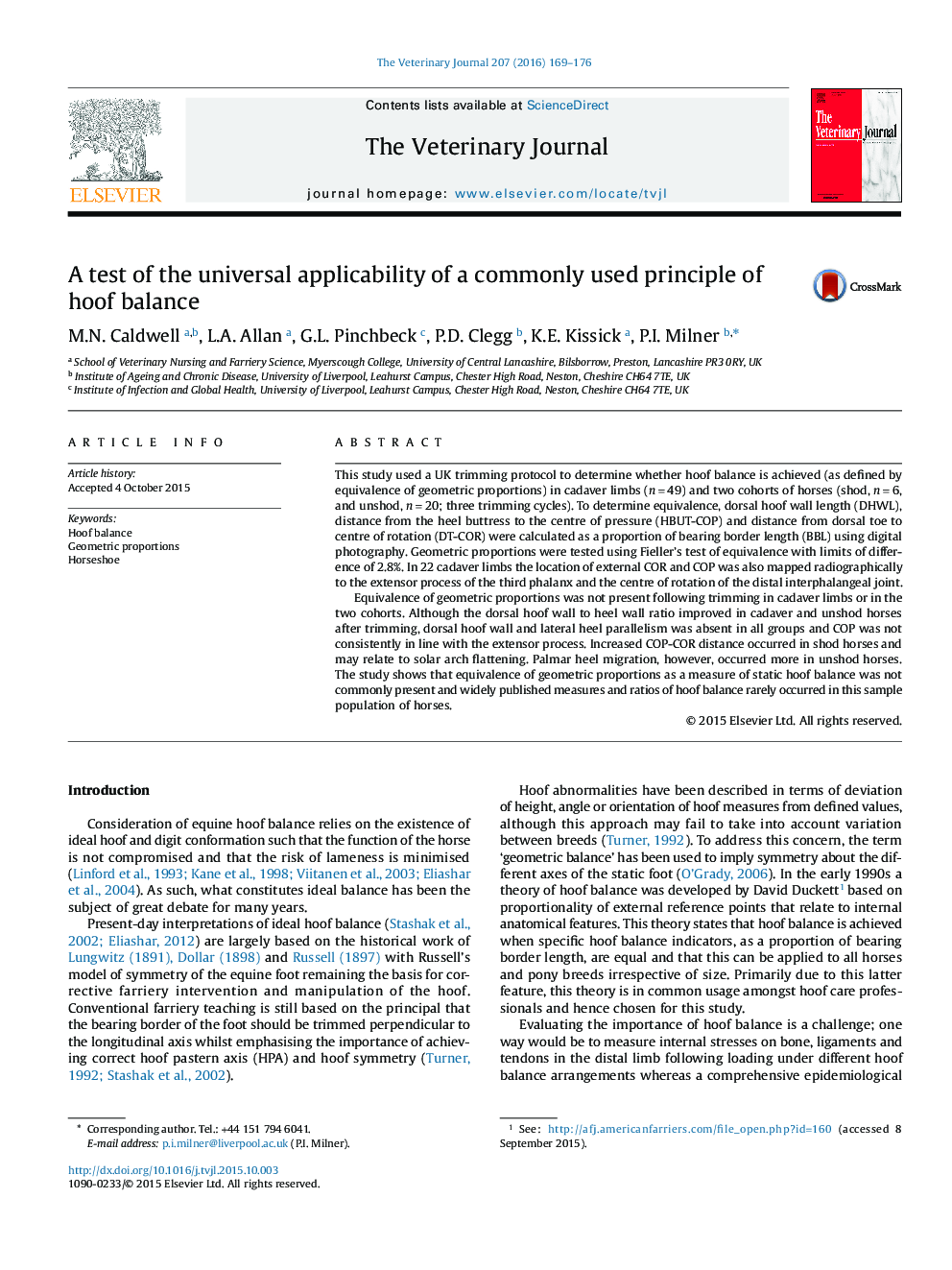| Article ID | Journal | Published Year | Pages | File Type |
|---|---|---|---|---|
| 5797559 | The Veterinary Journal | 2016 | 8 Pages |
â¢Geometric proportions were used as a measure of hoof balance.â¢The study followed a prospective cohort of horses over three trimming cycles.â¢Widely accepted measures of hoof balance did not commonly exist in the sample groups examined.â¢Equivalence of means as a measure of hoof balance also did not commonly occur.â¢The findings explain why palmar heel migration and solar flattening occur in the hoof.
This study used a UK trimming protocol to determine whether hoof balance is achieved (as defined by equivalence of geometric proportions) in cadaver limbs (nâ=â49) and two cohorts of horses (shod, nâ=â6, and unshod, nâ=â20; three trimming cycles). To determine equivalence, dorsal hoof wall length (DHWL), distance from the heel buttress to the centre of pressure (HBUT-COP) and distance from dorsal toe to centre of rotation (DT-COR) were calculated as a proportion of bearing border length (BBL) using digital photography. Geometric proportions were tested using Fieller's test of equivalence with limits of difference of 2.8%. In 22 cadaver limbs the location of external COR and COP was also mapped radiographically to the extensor process of the third phalanx and the centre of rotation of the distal interphalangeal joint.Equivalence of geometric proportions was not present following trimming in cadaver limbs or in the two cohorts. Although the dorsal hoof wall to heel wall ratio improved in cadaver and unshod horses after trimming, dorsal hoof wall and lateral heel parallelism was absent in all groups and COP was not consistently in line with the extensor process. Increased COP-COR distance occurred in shod horses and may relate to solar arch flattening. Palmar heel migration, however, occurred more in unshod horses. The study shows that equivalence of geometric proportions as a measure of static hoof balance was not commonly present and widely published measures and ratios of hoof balance rarely occurred in this sample population of horses.
